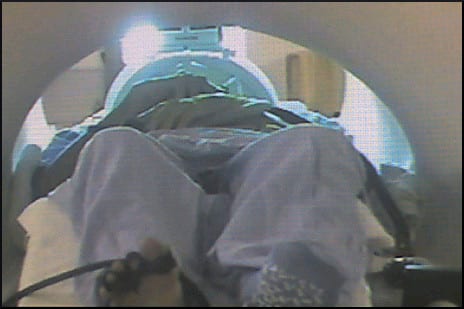
As writer Grant McArthur reminds us:
Obese children are 27 times more likely to have type 2 diabetes than a child with healthy weight, twice as likely to have hypertension and obstructive sleep apnea, and also have a significantly higher chance of suffering asthma and gastric reflux.
Many people are also aware of the likelihood of heart problems, and some are aware of the host of other complications that can appear in the life of an obese child. Some of the difficulties don’t qualify as an actual disease, like diabetes, but are horrendous nonetheless — like having to sleep sitting up.
The need to make a major production out of picking up an item that fell on the floor is pretty unpleasant. How does it feel to a 15-year-old when someone decides to wait and take the next elevator, because he is a passenger? What if her family lives in a mobile home with a tiny cramped shower stall that she can’t even fit into?
On the road
A report on motor vehicle fatalities states that seatbelts are not worn by “a certain number of individuals from some subgroups,” which is a tactful way of saying fat people. The odds of seatbelt use for normal-weight individuals were found to be 67% higher than the odds of seatbelt use in the morbidly obese.
Crash test dummies are being developed that better represent the morbidly obese human, but no amount of clever engineering can help if people don’t buckle their seat belts. What are the dangers?
Prof. Richard Kent of the University of Virginia says:
The risk of your head hitting against something may go down if you’re obese. Whereas the risk of getting a thoracic injury, abdominal injury, or a lower limb injury especially, will go up.
Diagnostics
If an obese young person has to go to a doctor because of a mysterious pain or some other sign, layers of fat make physical examination difficult, and when it comes to the fancy machines, more trouble is in store:
Modern imaging equipment has designated weight limits established in order to ensure patient safety while avoiding damage to the equipment itself, and at most hospitals, there is a lack of equipment that can accommodate the size of obese patients. Obesity is also detrimental to image quality. Increased tissue thickness makes it difficult to obtain diagnostic images; therefore, the quality of care given to these patients suffers.
Obese patients are likely to experience embarrassment as technicians struggle to accommodate them on the imaging equipment. During the transfer from one surface to another, the patient is at risk for a fall, and the medical personnel also are vulnerable to injury. For the radiologist, it is difficult to obtain images of acceptable diagnostic quality, and obese patients wind up absorbing more radiation because of the need for multiple exposures.
Computed tomography, known familiarly as the CT scan, poses its own limitations. With any luck, the scanner might hold a 450-pound person. MRI or magnetic resonance imaging is even more restrictive, with the typical limit being 350 pounds, and even then, a large body poses multiple problems for a number of reasons. And ultrasonography? Forget it. “Ultrasound is the imaging modality that is most affected by patient obesity.”
And if they need surgery…
The doctors who specialize in keeping patients “out” during surgery face unprecedented challenges. They have to get used to 130-pound 6-year-olds and 200-pound 10-year-olds, and to calculate the correct and appropriate dosage of anesthetic for such kids is not easy.
The need to proceed with caution, and the possibility of error, can turn what should be a simple outpatient procedure into a hospital stay. Pediatric anesthetist Balvindar Kaur of Melbourne, Australia says:
Children have a relatively higher metabolic rate than adults — higher heart rate and other outputs — and while we generally dose by weight you can’t give a 90kg child what you might administer to a 90kg adult.
Your responses and feedback are welcome!
Source: “Obesity and Medical Imaging,” ISU.edu, 11/13/12
Source: “Anaesthetists struggling with dose sizes in childhood obesity cases,” HeraldSun.com, 05/04/15
Source: “Obesity and seatbelt use: a fatal relationship,” ajemjournal.com, July 2014
Source: “Study Finds Obesity Impacts Seatbelt Safety,” Newsplex.com, 01/27/15
Image by Tschaff

 FAQs and Media Requests:
FAQs and Media Requests: 











